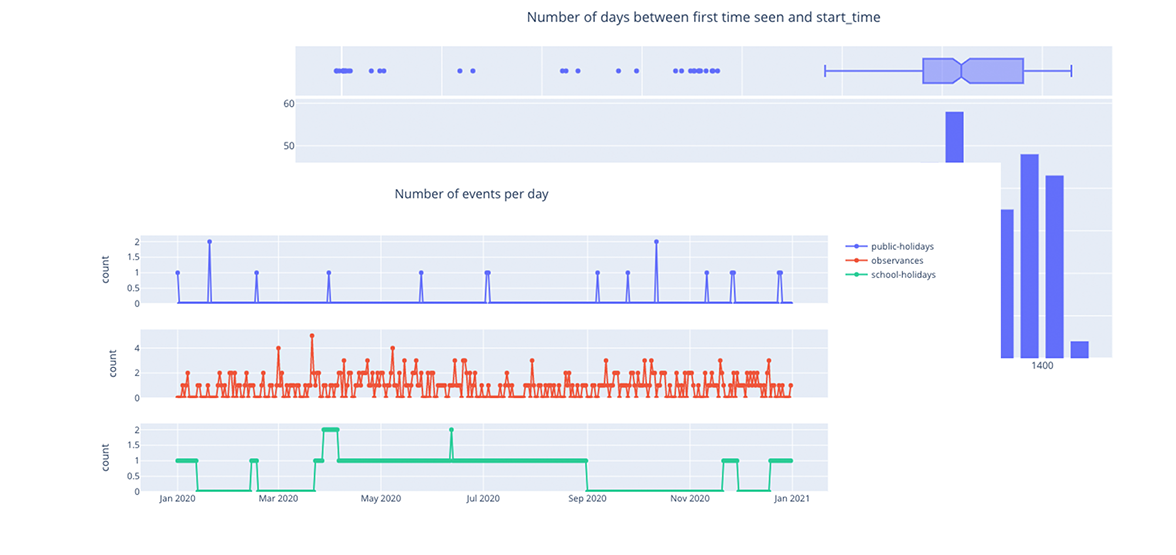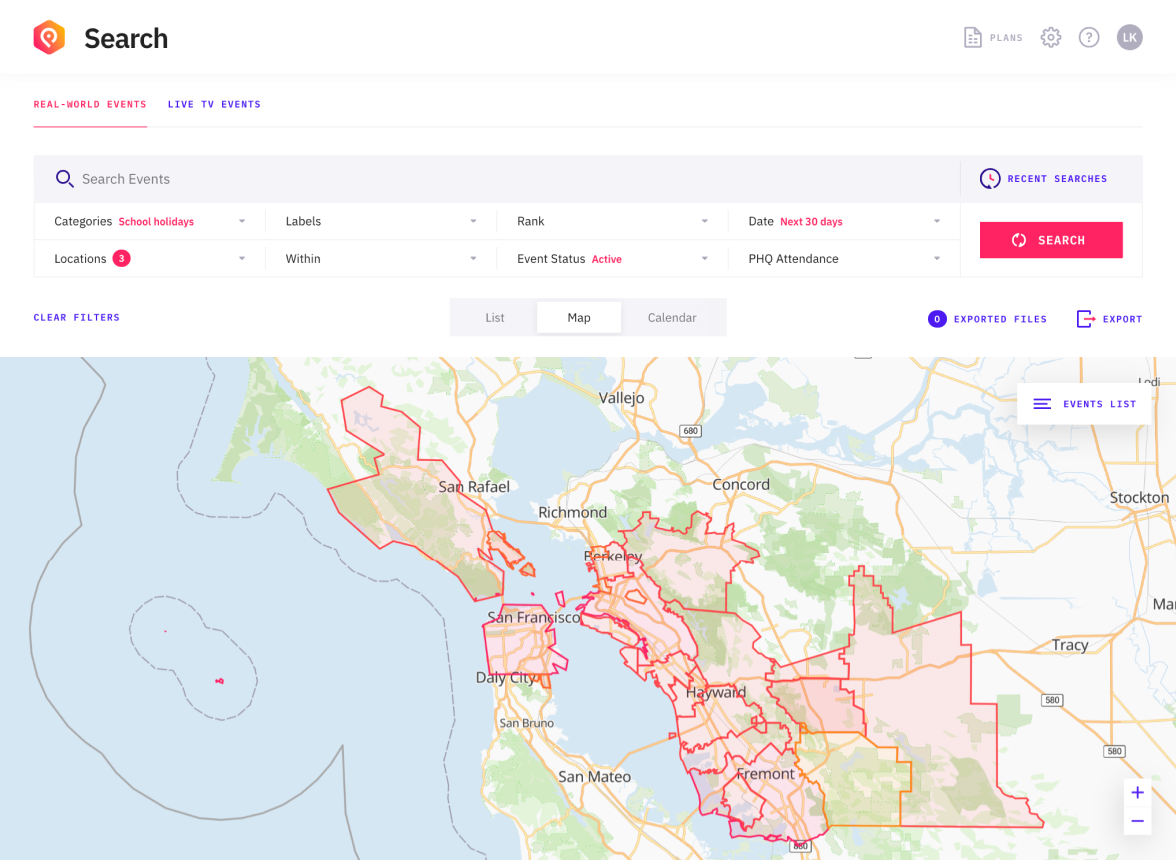School holidays drive shifts in demand
School holidays such as summer break differ by state and city, as well as globally. All are ranked as major impact and need to be factored into forecasting.
Tracking and incorporating school holiday data is key to accurately capture upcoming demand
If your business revolves around children and families or is located within a short radius of a school, tracking school holiday data should be part of your planning or forecasting. PredictHQ tracks holiday dates for term or semester for primary and secondary schools. School holidays represent the date range when schools are closed. There are many school holidays globally, but they can impact your demand drastically if you aren’t aware of them. Whether you run a coffee chain that expects parents to come in after school drop off or you’re a hotelier that sees a big spike in demand when students are on break.
Top school holidays happening in the next 90 days
There are often several school holidays that happen every month. In order to best prepare, you need to have insight into the impactful holidays coming up. These are a sample of the top school holidays coming up in the next three months that may have an impact on your business.
Get a better picture of demand with granular school holiday data
PredictHQ is the only data provider to provide school holiday data at the district level for the US and the UK. Track 11,000 school districts, with 55,000 school holidays per year in the US, and local council level school holidays for the UK. District-level coverage means you can have significantly more visibility into your demand drivers.

Get up and running quickly with our School Holiday data
We’ve created a Jupyter notebook around how to integrate scheduled, non-attendance-based data such as School Holidays into your models to help your Data Science teams get up and running quickly. It includes guides to using our API and data with common Data Science tools and libraries in Python.

Identify and track the geographic area impacted by school holidays
Not only do we track school holidays at the district level but we also enable you to more accurately understand their geographic impact through our polygons features. School holidays don’t occur neatly at a point on a map, they impact a geographic area such as a region, state or an entire country. PredictHQ’s polygons enables you to see the full area impacted by a school holiday event represented as a shape. That means you will get a much more accurate picture of impact.

Measure impact with PredictHQ's ranks
We rank all school holidays in the US and the UK by student numbers on a logarithmic scale. Depending on the size of the district’s student population, the size of impact will differ. For example the Summer Half Term Holidays in Kent, UK affects 257,694 students and has a rank of 98. The Winter Holidays in Manchester affects 95,432 students, therefore has a slightly lower rank of 90. All school holidays outside of the US and the UK have a PHQ Rank of 90 to indicate the general impact on the region.

School Holidays include breaks for students K-12
PredictHQ’s School Holiday category covers the holiday dates for primary and secondary school globally. We have a separate category called Academic Events that tracks activity for higher education institutions. Both are important to track if students or their parents are important demographics for your business.

School holidays impact customers differently
Data teams rely on high quality school holiday data to understand market conditions across all industries. Demand intelligence is designed to seamlessly plug into current forecasting models and improve the output.
Explore our event categories
School Holidays are one of 19 categories PredictHQ tracks. We track both unscheduled and scheduled events that you can discover what else is impacting your demand.
You can’t prepare for what you don’t see coming
Harness the power of demand intelligence
Knowing the impact of demand causal factors like events will transform your business. The American Society of Hematology has a $45M estimated economic impact — and that's only one event in one city.
- data points enriching0
- events across0
- cities, accessed via01 API



